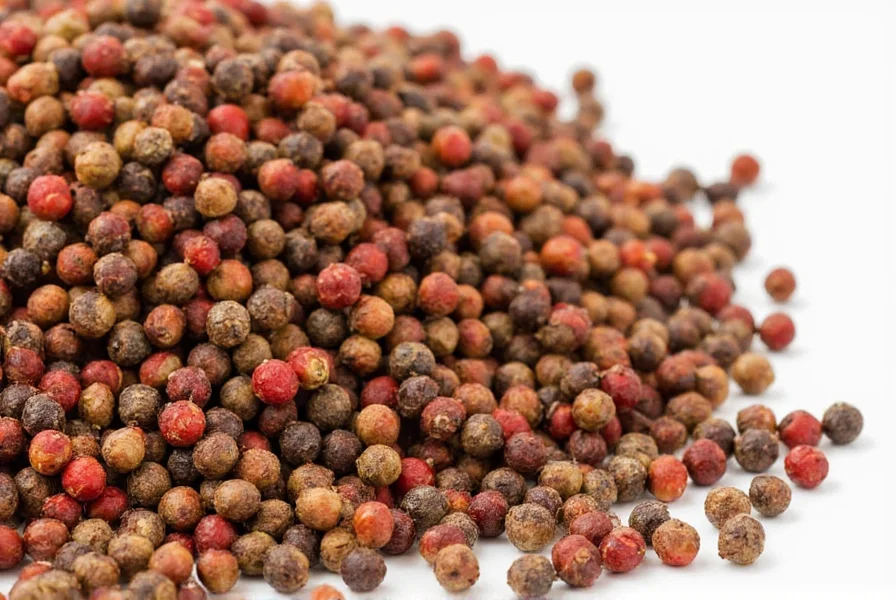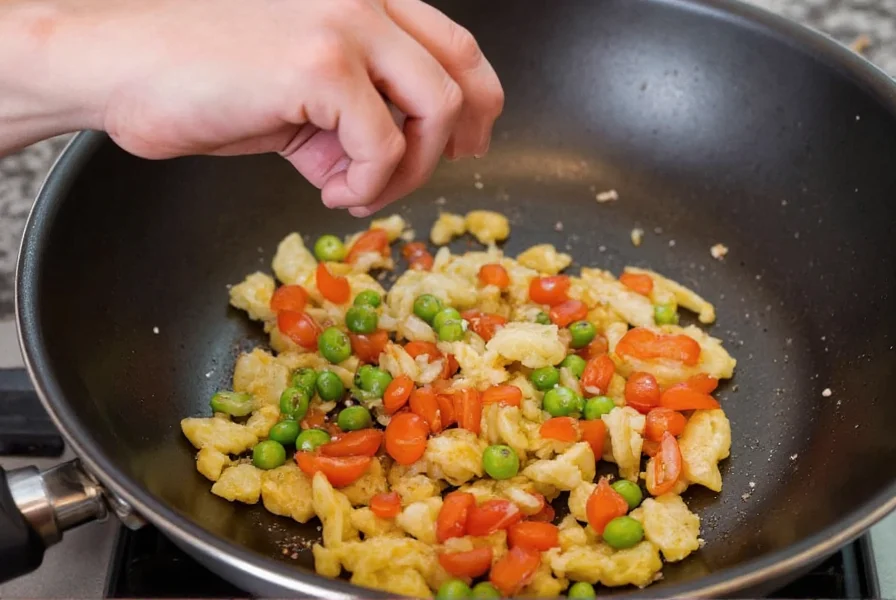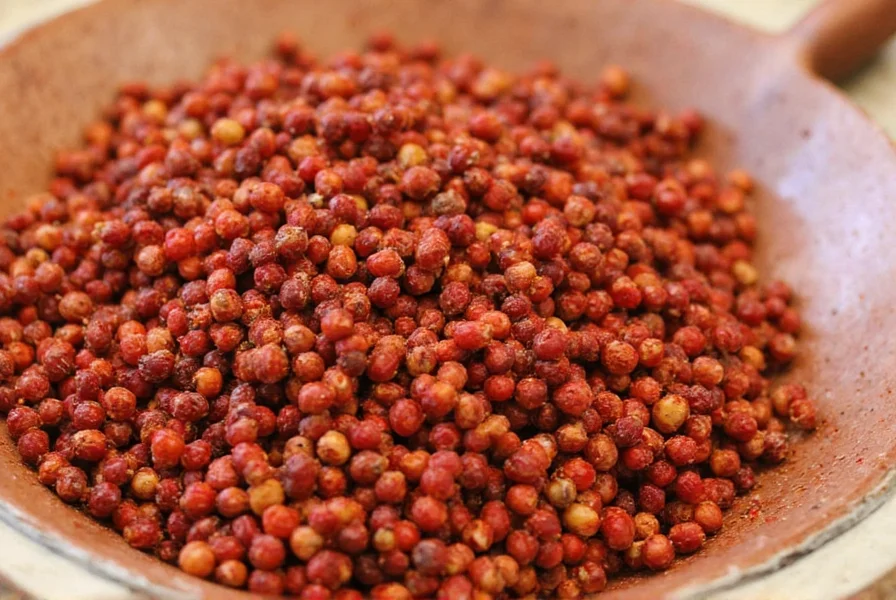The best Szechuan pepper substitute is a combination of花椒粉 (ground Szechuan pepper) mixed with a pinch of cinnamon and a dash of allspice. For immediate alternatives, Tellicherry black pepper with a hint of citrus zest provides the closest approximation of Szechuan pepper's unique numbing quality and floral aroma. Star anise combined with regular black pepper serves as an effective pantry staple replacement for most recipes requiring Szechuan peppercorns.
When you're preparing authentic Sichuan cuisine and realize you've run out of Szechuan peppercorns, finding the right substitute becomes crucial. These distinctive Chinese spices—known for their citrusy aroma and signature mouth-tingling "ma la" sensation—aren't easily replicated, but several alternatives can maintain your dish's integrity when used properly.
Understanding Szechuan Pepper's Unique Profile
Szechuan pepper (花椒, huā jiāo) isn't actually a true pepper but the dried husks of berries from the Zanthoxylum genus. Unlike black pepper's heat, Szechuan pepper creates a unique tingling, numbing sensation called "paresthesia" while delivering complex citrus and floral notes. This dual sensory experience makes finding accurate substitutes challenging but not impossible.

Top Szechuan Pepper Substitutes Ranked
Not all alternatives work equally well across different dishes. The best replacement depends on whether you need to replicate the numbing sensation, the citrus flavor, or both.
| Substitute | Best For | Substitution Ratio | Flavor Notes |
|---|---|---|---|
| Szechuan Peppercorn Blend (ground Szechuan pepper + cinnamon) | Authentic Sichuan recipes | 1:1 | Closest match for numbing sensation with warm spice notes |
| Tellicherry black pepper + lemon zest | Quick pantry solution | 1 tsp black pepper + 1/4 tsp zest per 1/2 tsp Szechuan | Provides heat with citrus undertones but lacks numbing quality |
| Star anise + black pepper | Stews and braises | 1/4 tsp star anise + 1/2 tsp black pepper per 1 tsp Szechuan | Delivers licorice notes with heat; simmer whole spices then remove |
| Asian prickly ash (if available) | Regional authenticity | 1:1 | Nearly identical to Chinese Szechuan pepper; common in Japanese cuisine |
Creating the Perfect Szechuan Pepper Alternative
For home cooks seeking the most authentic experience without specialty ingredients, this simple blend works remarkably well:
- Basic Substitute Blend: Combine 1 teaspoon Tellicherry black pepper (known for its complex flavor), 1/4 teaspoon ground cinnamon, and 1/8 teaspoon ground allspice. Store in an airtight container for up to 2 weeks.
- For Numbing Sensation: Add a tiny pinch (about 1/16 teaspoon) of baking soda to your substitute blend when making mapo tofu or other dishes where the "ma" sensation is essential. This creates a mild alkaline reaction that mimics the tingling effect.
- For Cold Dishes: When preparing cold Sichuan dishes like dan dan noodles, add a few drops of Szechuan pepper oil (available at Asian markets) to your finished dish rather than cooking the substitute directly.
When Substitutes Fall Short
Some applications simply don't work with substitutes. Avoid using these alternatives when:
- Preparing authentic Szechuan dry-fried dishes where the numbing sensation is central to the experience
- Cooking for guests familiar with genuine Szechuan cuisine who expect the distinctive mouthfeel
- Creating traditional Chinese medicinal preparations where specific compounds matter
In these cases, consider ordering authentic Szechuan peppercorns online—many specialty spice retailers offer small quantities that ship quickly. Look for bright red or rust-colored peppercorns (avoid brownish ones, which indicate age and diminished potency).
Practical Cooking Tips with Substitutes
When using substitutes in your cooking:
- Toast first: Lightly toast your substitute blend in a dry pan for 30-60 seconds before use to release maximum flavor
- Add late: Incorporate your substitute during the final 2-3 minutes of cooking to preserve volatile aromatic compounds
- Adjust gradually: Start with half the recommended amount, then taste and adjust—substitutes often require fine-tuning based on your specific recipe
- Pair wisely: Combine with chili oil or fresh chilies to recreate the complete "ma la" (numbing-spicy) experience essential to Sichuan cuisine

Why Some Common Suggestions Don't Work
You'll find many misleading suggestions online for Szechuan pepper alternatives. These combinations generally disappoint:
- Black pepper alone: Provides heat but lacks the citrus notes and numbing quality
- White pepper: Has a sharper, medicinal quality that overwhelms delicate dishes
- Capsicum-based spices: Chili powders add heat but none of the characteristic tingling sensation
- Allspice alone: While it shares some flavor compounds, it lacks the distinctive mouthfeel
The key to successful substitution lies in understanding that Szechuan pepper's magic comes from hydroxy-alpha-sanshool, a compound that triggers nerve endings differently than capsaicin in chilies. No single pantry staple replicates this exactly, which is why strategic combinations work best.











 浙公网安备
33010002000092号
浙公网安备
33010002000092号 浙B2-20120091-4
浙B2-20120091-4